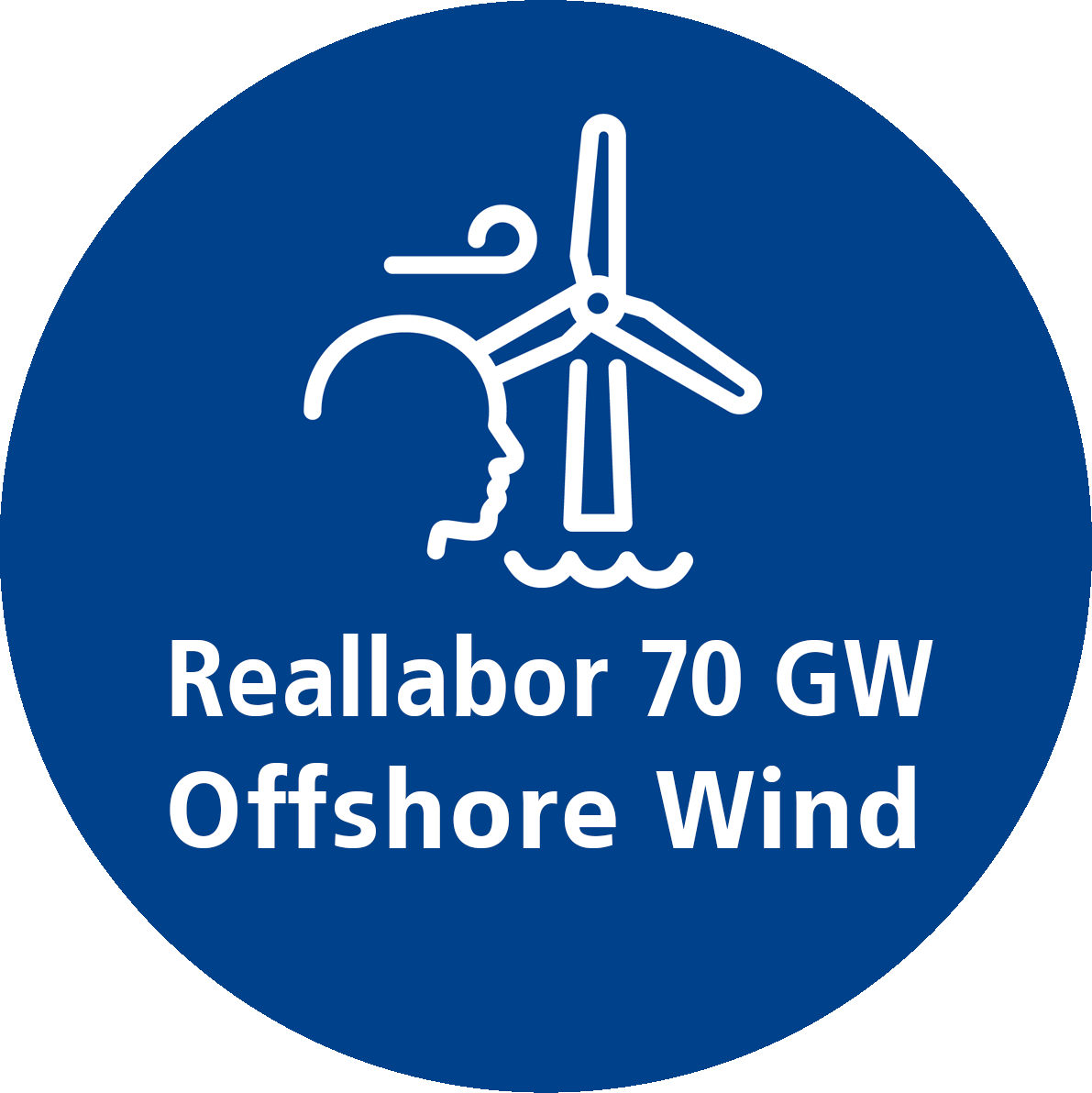Innovation area IV
System-oriented integration and aerodynamics of offshore wind turbines and wind farms
The focus is on several offshore measurement campaigns in wind farm clusters. This database will be used to reconstruct flow dynamics on different scales and enable predictions to be made.
Higher wind turbines will reach into strong, laminar winds. The interaction of these flow conditions with turbines and wakes is examined in more detail in wind tunnel tests.
- Quality-assured in-situ measurement campaign in two wind farm clusters
- Operational optimization: power – grid integration – loads (operating time/costs)
Subproject IV.1
Offshore measurement campaigns in wind farm clusters
Several meteorological measurement campaigns and the high-resolution wind farm operating data (SCADA) form the basis for the other sub-projects as well as support for structural health monitoring in IB III and oceanographic measurements in IB V.
The measurements are carried out on the basis of the measurement specification drawn up with the stakeholders.
Researchers
Prof. Dr. Martin Kühn
University of Oldenburg/ForWind
Subproject IV.2
Reconstruction of the dynamics of offshore wind farm clusters
Fluctuations in the wind flow, especially wind ramps, hinder the system-friendly operation of wind farms and electricity trading. Observer-based forecasts in the minute range can support their prediction.
High-resolution lidar wind measurements enable research into the prediction of local wind dynamics on shorter, high-frequency time scales.
In this way, lag-induced yield losses and loads could be reduced and system services provided more precisely.
Researchers
Dr. Andreas Rott
University of Oldenburg/ForWind
Dr. Martin Dörenkämper
Fraunhofer IWES
Subproject IV.3
Flow conditions of future wind turbines
Offshore wind turbines are getting higher and higher and will soon reach completely different atmospheric wind conditions. How these laminar-turbulent winds, instead of the familiar turbulent winds, will affect turbine performance and loads as well as the wake is virtually unknown.
The aim is to record the complex flow dynamics, create initial forecasts for power, loads and, in particular, overruns, and finally check them.
Researchers
Prof. Dr. Kerstin Avila
University of Oldenburg/ForWind
Subproject IV.4
Coherent flow structures in wind farms
The flow conditions, loads and power output of a wind farm are influenced, among other things, by coherent structures in the inflow.
A better understanding of how these structures interact with the turbines is necessary in order to make future wind farms more efficient and durable.
The aim of this sub-project is to investigate how coherent flow structures move through a wind farm.
Researchers
Dr. Michael Hölling
University of Oldenburg/ForWind
Subproject IV.5
Design and control of offshore wind farm clusters
In order to integrate the offshore wind farms connected via high-voltage direct current (HVDC) transmission into the electricity grid, they will have to take over the provision of system services for the onshore transmission grid in future.
Furthermore, it is expected that grid-forming converters will also be used in OWPs in the future, which will fundamentally change the feed-in behavior determined by the control system and thus also the provision of system services by the wind farms, or in some cases make this possible in the first place.
Controls are therefore being developed for the provision of active power, in particular for frequency control with grid-supporting or grid-forming converters to ensure grid stability by adjusting the mechanical output and simultaneously reducing the mechanical load on the individual wind turbines to improve maintenance and extend their service life. HVDC must enable these services for the onshore transmission grid.
Researchers
Prof. Dr.-Ing. habil. Lutz Hofmann
University of Hanover/ForWind
Dr.-Ing. Thomas Leveringhaus
University of Hanover/ForWind
Dr. sc. Vlaho Petrovic
University of Oldenburg/ForWind
